Seeing as I have only a short period of time in the city, I didn’t hesitate long before jumping into activities organized by the local foodie community. I was lucky to come across the Slow Food Walks that happened to be scheduled for this weekend, and so took ample opportunity by doing not one, not two, but three events today. But one thing at a time, let me tell you about… chocolate making!
I was fortunate enough to attend a workshop and degustation given by Laurent Gerbaud, a chocolatier whose shop sits in the heart of Brussels, and who shared with us a wealth of knowledge about chocolate making and tasting. He is specifically known for his original ideas and new flavors, seeking particularly floral chocolate aromas and combining them with dried and candied fruit from around the world.
His logo is based on the Chinese symbol for chocolate, because – having studied sinology and having always been interested in the culture – he originally wanted to focus on the Chinese market. However, as he found out, so far the Chinese don’t have a particularly strong taste for sweets and high-end desserts – they are happily given and received as presents, but rarely unpacked and consumed. Plus, market research is nearly impossible because “they say just ‘yes’ to everything – they are too polite!” So Gerbaud packed his bags again, but took along a taste for salty-sweet mixtures and for special fruits that he has incorporated in his work.
The chocolate that he uses comes from two specific cocoa varieties: the Trinitario, from Madagascar, and the Nacional, grown exclusively in Ecuador. When I asked whether his cocoa was certified through Fair Trade or another label, he scoffed and said that these labels – though he made an exception for organics – were highly problematic for two reasons:
First, he raised the mass balance transaction problem of fair trade in high-volume production. Let’s explain this with the example of Fairtrade International, the label of FLO. Normally, this label requires physical traceability – that is, fair trade products have to be separated from non-fair trade products at all parts of the production line in order to receive the label. However, in some commodities (specifically cocoa, tea, sugar and juice), production is dominated by very small-scale producers that have no influence over the processing and the market share of fair trade is still very low. According to Fairtrade International, requiring physical traceability would exclude small-scale producers from the possibility of being accepted into the scheme, and of improving their living conditions. What is done instead is the principle of mass balance transaction (in the words of Fairtrade):
“Mass Balance is only applicable to cocoa, cane sugar, juice and tea operators with no physical traceability. There are two types of Mass Balance practices:
- Single Site Mass Balance: This means that when a producer or company delivers a quantity of Fairtrade ingredients to a factory or site, only the equivalent amount of processed Fairtrade product leaving that site may be sold as Fairtrade. For example, if a farmer delivers a tonne of Fairtrade tea to a factory for processing, the factory can only sell the equivalent amount of processed tea as Fairtrade.
- Group Mass Balance: This means that the amount of Fairtrade product a company buys must match the amount of the processed product it sells as Fairtrade. The company will be audited on the total amount bought and sold from all of their production sites instead of each individual site. Only cocoa and sugar operators can implement Group Mass Balance for up to two years and ending by 2015 at the latest. The two year period is not renewable.”
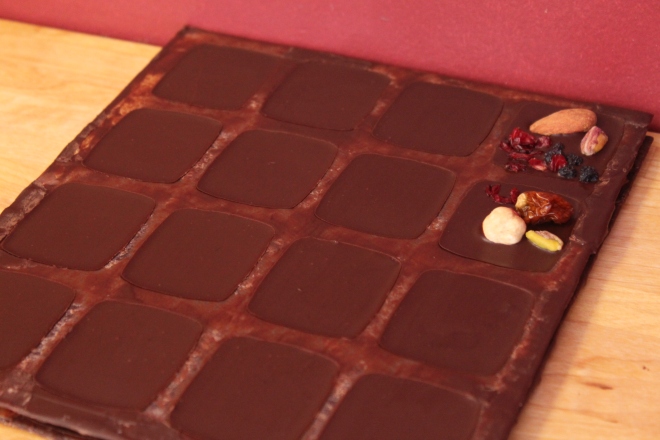 Second, and relatedly, he said that ‘a fair trade certificate can be bought in the market just like another ton of cocoa’. This, I assume, refers to two facts. On the one hand, there is no legally enforceable standard for Fair Trade as there is for organics (which, for example, the USDA and the European Commission regulate rather closely). While there are labeling organizations with complex verification systems, such as FLO, the Fairtrade Labelling Organization, there exist a multitude of other standards and even company-internal standards which are not always transparent. That is, paying a price premium for your cocoa is not enough if you don’t know if the producers see much of that premium at the very bottom of the production chain. Plus, in cases of mass balance transactions, even though the company can buy “100 tons of Fairtrade cocoa”, they have no idea whether the beans they finally get were produced under fair trade conditions or not. These, however, are the beans that will be in the chocolate labelled as ‘fair trade’, which we eat with a better conscience. This circumstance, according to Gerbaud, and also to this article, cons consumers into thinking they are making an ethical choice while their fair trade bar might not contain any fair trade cocoa at all.
Second, and relatedly, he said that ‘a fair trade certificate can be bought in the market just like another ton of cocoa’. This, I assume, refers to two facts. On the one hand, there is no legally enforceable standard for Fair Trade as there is for organics (which, for example, the USDA and the European Commission regulate rather closely). While there are labeling organizations with complex verification systems, such as FLO, the Fairtrade Labelling Organization, there exist a multitude of other standards and even company-internal standards which are not always transparent. That is, paying a price premium for your cocoa is not enough if you don’t know if the producers see much of that premium at the very bottom of the production chain. Plus, in cases of mass balance transactions, even though the company can buy “100 tons of Fairtrade cocoa”, they have no idea whether the beans they finally get were produced under fair trade conditions or not. These, however, are the beans that will be in the chocolate labelled as ‘fair trade’, which we eat with a better conscience. This circumstance, according to Gerbaud, and also to this article, cons consumers into thinking they are making an ethical choice while their fair trade bar might not contain any fair trade cocoa at all.
What he suggested as a better alternative is direct trade – where companies source directly in particular producer cooperatives and ensure to pay these producers a fair price. This process has been initiated mainly by coffee roasters (for instance in the US), but more and more, cocoa processors and chocolatiers are eyeing direct trade with interest. One main reason: the direct links also allow bean-to-bar traceability in terms of quality – which is important when engaging in the high-end chocolate production like Gerbauds’, where every single batch is different and has to be adjusted in its components.
As the linked article above describes, such direct trade often eschews other formal certification labeling because the purchaser works closely with the particular producer and trusts in their implementation of the set standards. This, however, requires a fair amount of consumer trust: first, in the company’s standards – since they are not externally ratified or verified – and second, in the company’s abilities to oversee the enforcement of these standards on the other end of the world.
On the other hand, one could argue (and this article does) that it doesn’t really matter whether your chocolate bar is made from that particular fair trade bean – with the purchase of the bar you have supported the purchase of an equivalent amount of fair trade cocoa beans somewhere in the world, and thus contributed to a fairer world market price regardless.
With those issues clarified, however, we were allowed to partake in the making of a typical Gerbaud chocolate bar from the form to the final product. Having written a lot so far, I will let pictures take over the rest:
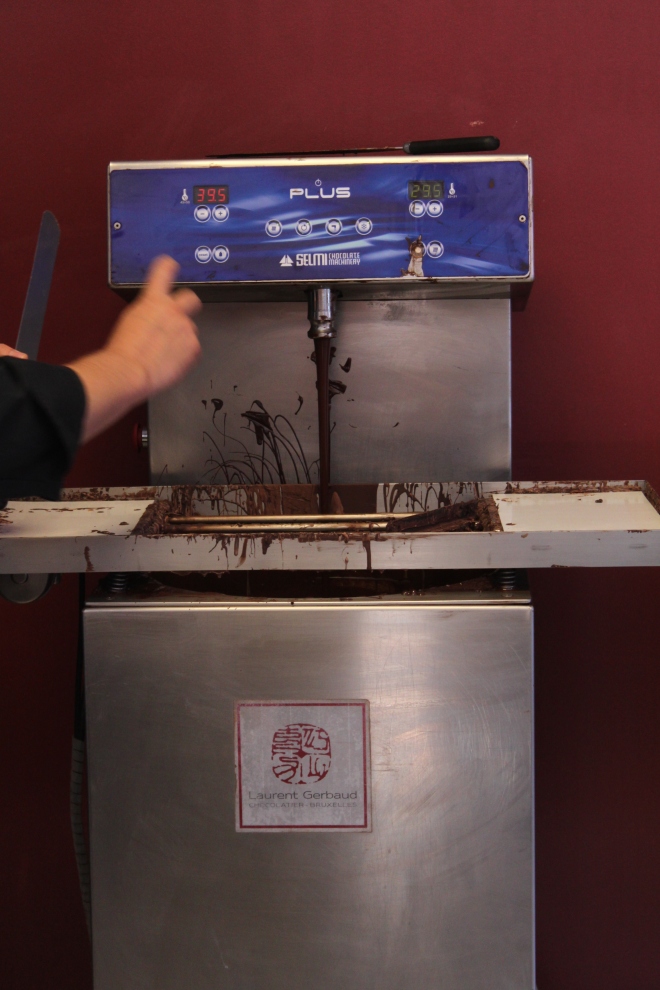
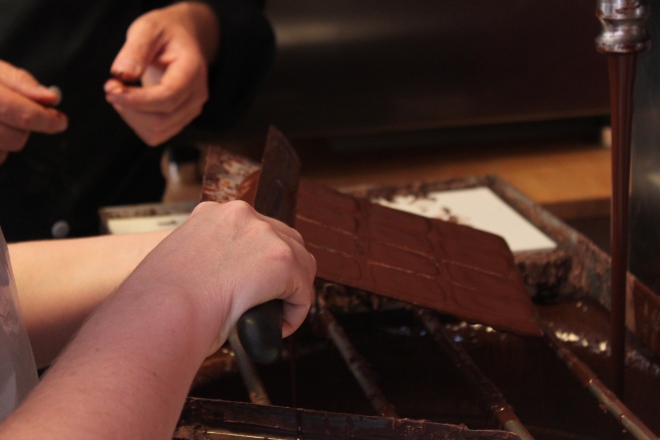
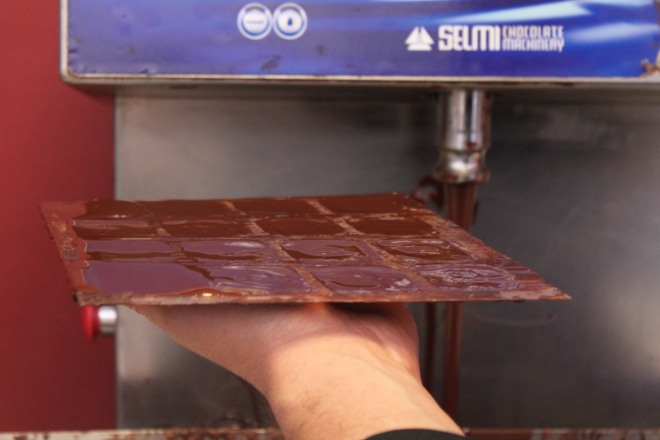
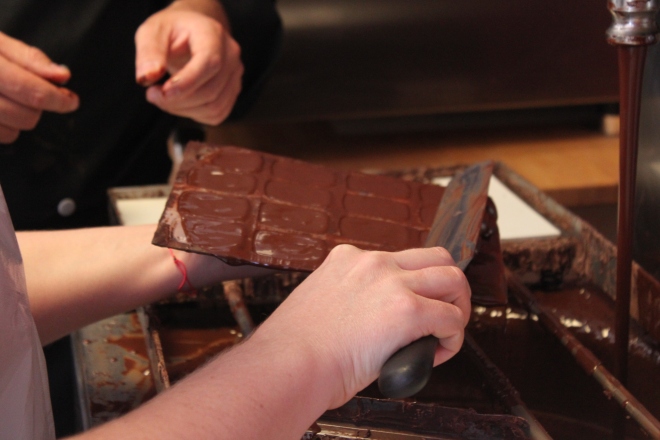
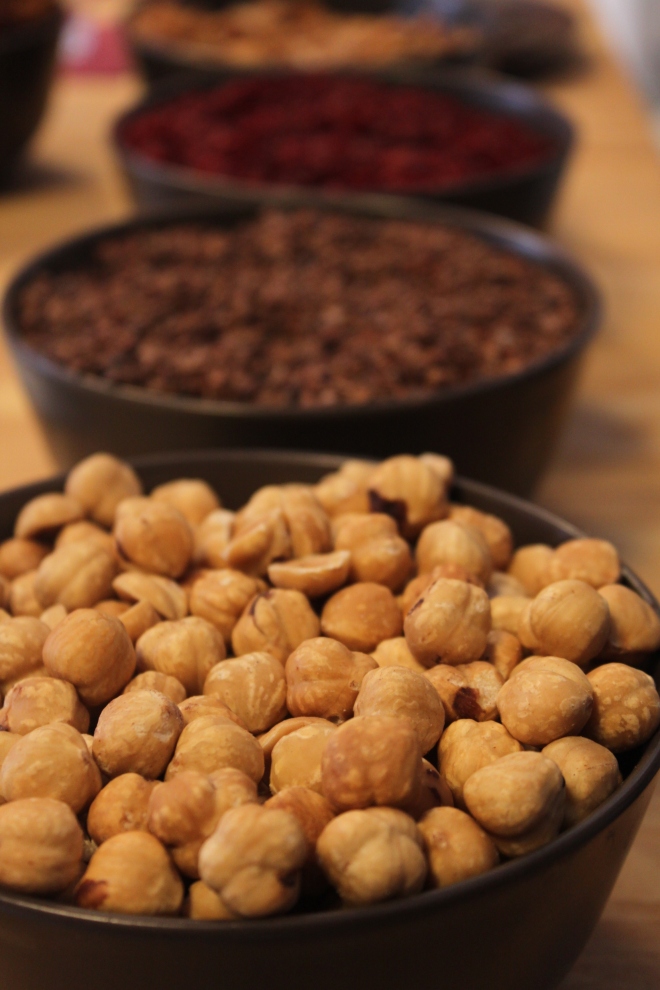

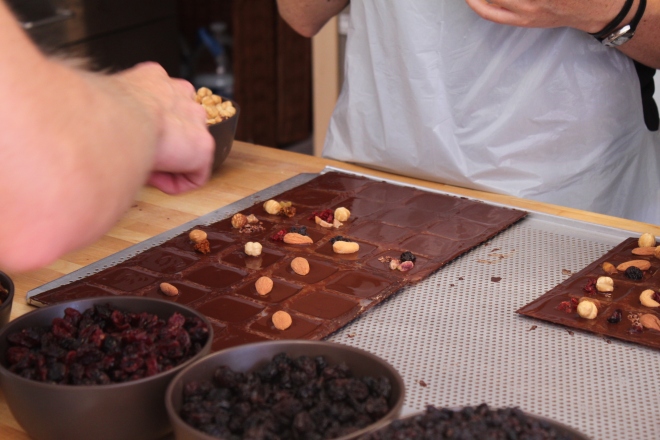
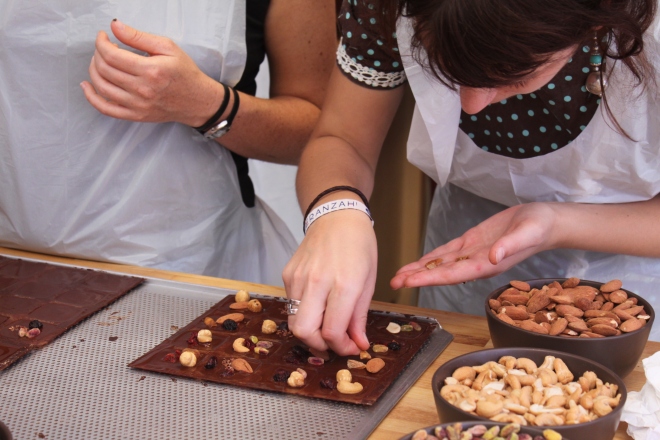
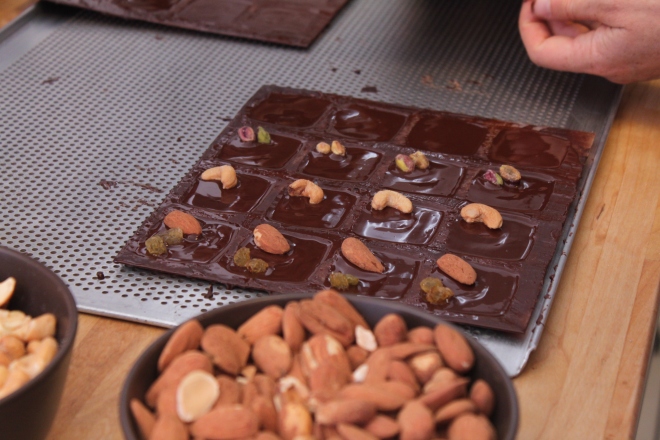
After a bit of time in the fridge, the chocolates can be easily removed from their molds and are sooo pretty…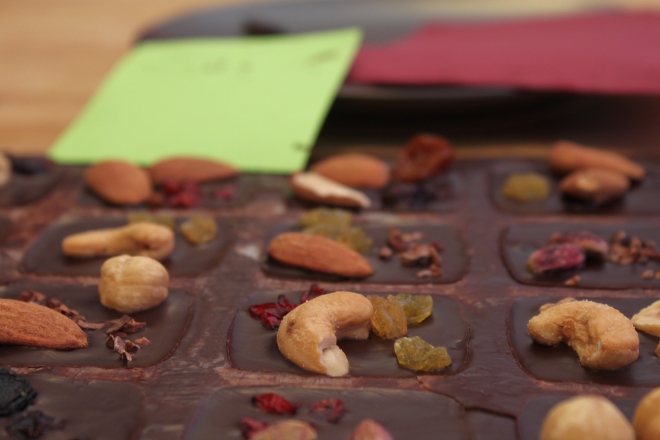
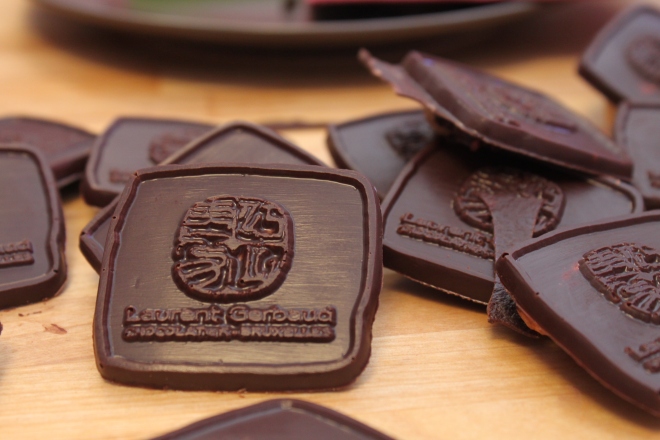
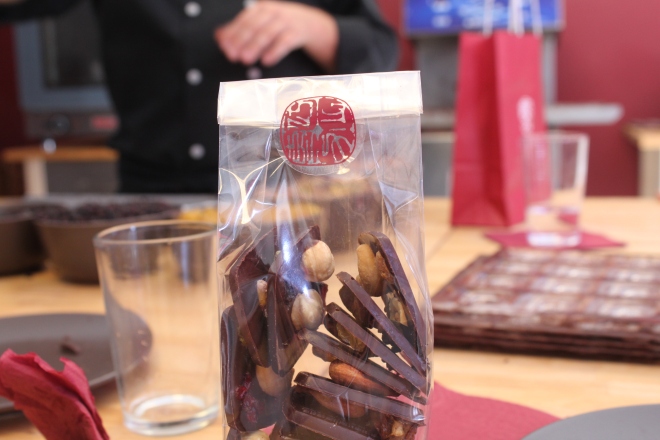

… No wonder it’s a secret recipe for all round love and appreciation! I was blown away by the knowledge, the generosity and the level of expertise of the chocolatier, by the way – definitely to be recommended! Especially those hazelnut pralines…
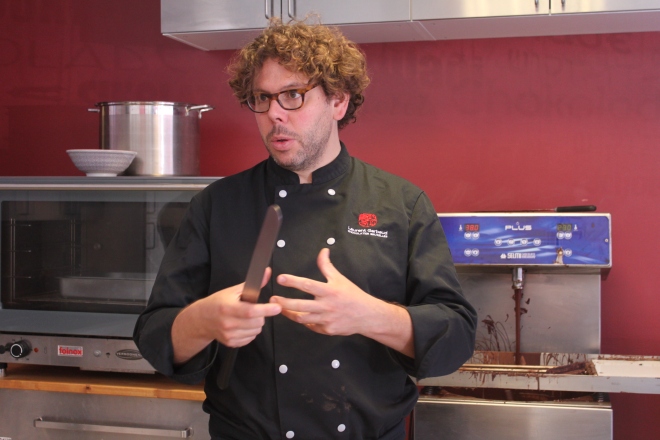
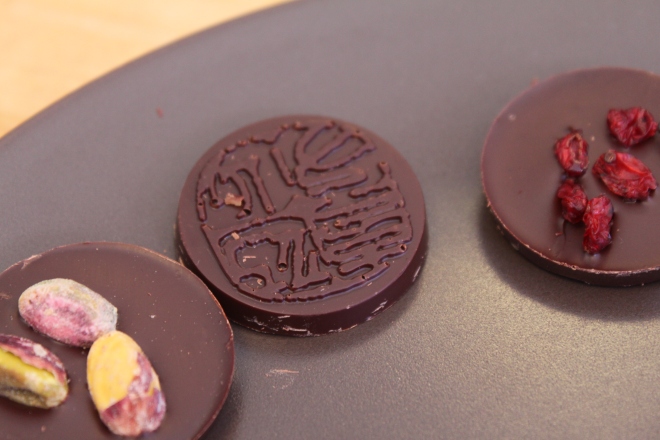
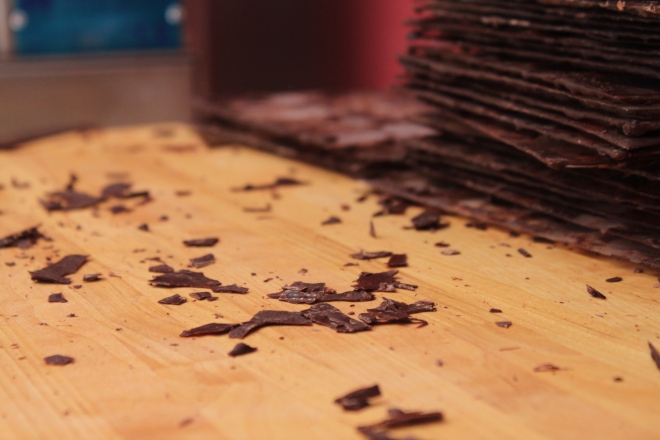
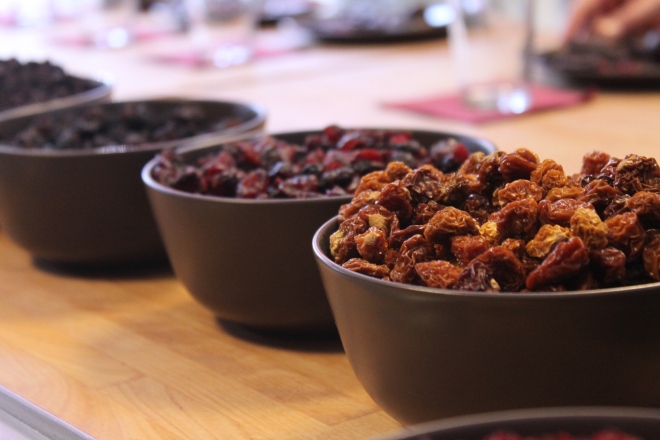
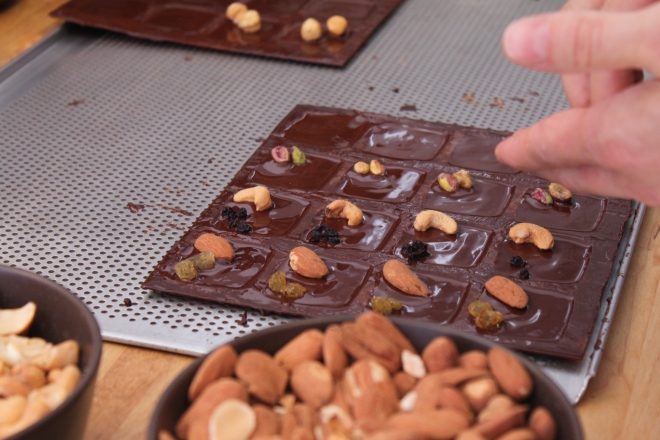
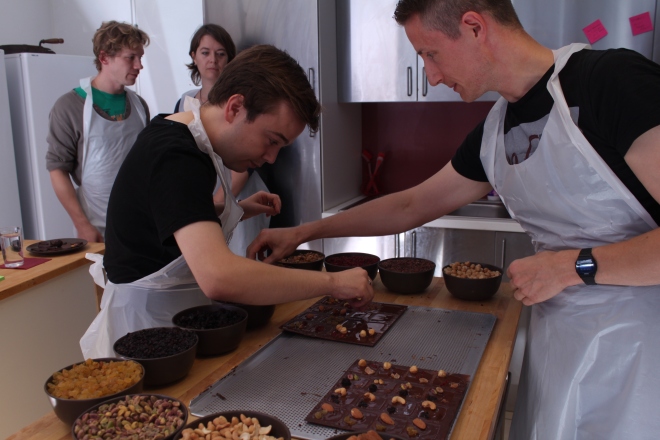
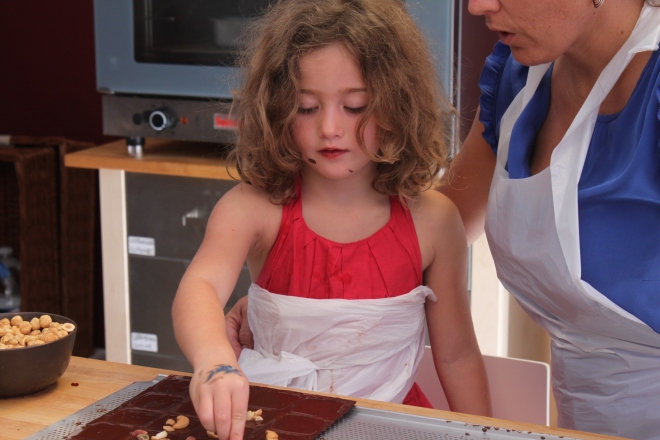
One thought on “Insights In Belgian Chocolate: From Theory to Practice!”